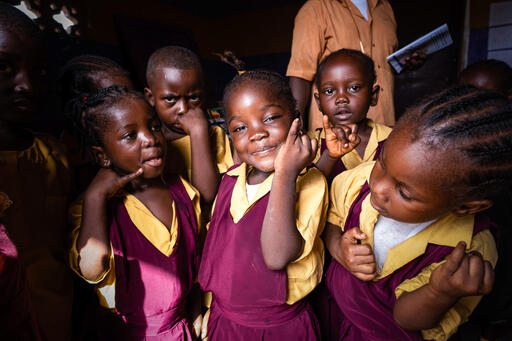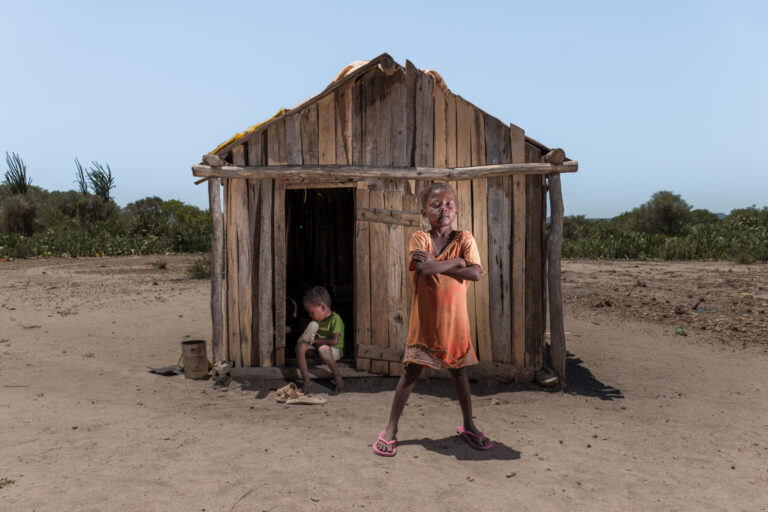Maria Luisa Jaen was abandoned by her mother at a hospital when she was 28 days old and placed into a residential care centre in the town of Cerro Silvestre, Arraiján District, in Panama Province. At just under two years old, her surroundings play a key role in determining her chances in life. A nurturing home environment and stimulating social interactions are essential to her development, laying the groundwork for her to achieve her fullest potential in later years. Maria was eventually reconnected with her grandparents and mother. While millions of children are known to be living in residential care, the exact figure is difficult to quantify, hindering our ability to respond to these children’s needs.
The life-long consequences for children in residential care
The adverse impacts of living in residential care facilities on nearly all aspects of child development are astounding and the costs are even greater for children under the age of 3 who are at risk of facing life-long consequences. These impacts range from impaired social and interpersonal development, including difficulties with forming secure attachments to caregivers, to delayed cognitive and language development to a heightened risk for exposure to abuse. The disadvantages of childhood adversity, such as the deprivation and stress experienced by children living in residential care institutions, can persist over time and the lasting negative impacts on health and productivity have the potential to impair equitable social and economic development on a societal level.
The wide recognition of such adverse impacts has led many countries to undertake efforts to reduce the numbers of children living in residential care. However, before a country can close institutions and move children into family-based care arrangements, such as with foster or adoptive families, or reuniting them with their families, they must first understand the magnitude and distribution of children living in residential care.
Understanding the magnitude of the situation
Worldwide, an estimated 2.7 million children are living in residential care including orphanages and institutions due to risk factors including family breakdown, health issues, poor or unequal provision of social services, disability and poverty. However, these figures, published in a recent article, are likely to be just the tip of the iceberg, with wide gaps in data collection and accurate records found in the majority of countries. The article assessed the availability and coverage of data on children living in residential and foster care from 142 countries covering more than 80 per cent of the world’s children and found that many countries still lack a functional system for producing accurate figures on the number of children living in institutions. Traditional household surveys and censuses systematically exclude children who do not live in households while administrative records remain poor, due to non-functional systems for capturing and recording the number and characteristics of children in care, inconsistent definitions, and a lack of resources or investment in collecting reliable data. In many countries, official records only capture a small fraction of the actual number of children living in residential care and children in privately operated centres are often not counted.
To understand the scale and distribution of populations of children living in residential care institutions, different studies have been conducted over the years across a wide variety of contexts and regions. However, most of these initiatives were based on inconsistent understandings of what qualifies as a residential care facility and high variability in methodological rigor and documentation of data collection efforts between study settings.

Standardizing data collection on children in residential care
Drawing from the lessons learned from and building on the successes of these previous exercises, the Data and Analytics section of UNICEF is developing a standardized approach to the collection of data on children in residential care.
The standard approach and accompanying data collection tools will generate information on the number and location of all residential care facilities in a country, the number and basic characteristics of children living in the facilities as well as some selected measures of their well-being. Its contents will provide technical guidance to countries on the recommended steps for data collection, collation, analysis and dissemination. By implementing the standard protocol, countries will be able to produce a baseline for official records, to use the resulting data to form the basis for developing a national registry or database on this population of children, to advocate for additional data collection exercises aimed at fulfilling other data needs, to inform and shape discussions on policy reform, and to monitor trends over time. The exercise will be piloted first in Uganda, but the final version of the standardized protocol may be adapted to a wide variety of country contexts to collect the data necessary to help improve the lives of children living in institutions.


